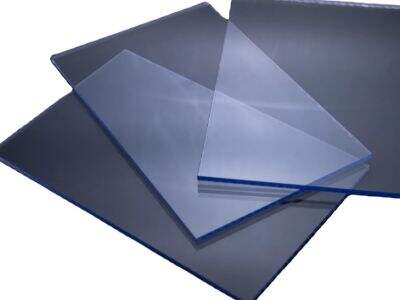Static can be quite a disaster for electronic devices, did you also know that? Static electricity occurs when two things rub together. This can damage sensitive electronics components that are crucial for precise operation of the devices. For instance, if you have been walking on a carpet and then touched a metal doorknob there may be shock feelings. We use a special type of plastic, anti-static acrylic, which does not produce electricity. Preventing electronic devices from damage due to static.
This special recipe is what makes acrylic วัสดุป้องกันไฟฟ้าสถิตย์. When manufacturing the plastic, they add special chemicals to it that make sure static electricity cannot build-up. These chemicals are all conductive and in any configuration, they assist electricity to flow. Surfaces constructed with anti-static acrylic almost nullifies the effect of static electricity on electronic devices. This is critical in order to maintain our hardware performing at a high level for an extended period of time.
The Advantages of Anti-Static Acrylic for Electronics
Anti-static acrylic is a key material in the world of electronics manufacturing. Work tables, cabinets and storage shelves. These devices are made specifically for protecting fragile electronics from the destructive ravages of static.
In addition, anti-static acrylic work surfaces allow workers a much easier and safer way to touch electronic devices. Dissipative flooring protects electronic parts from static electricity, generated when workers touch these components. This can potentially cause issues and accidental damage to the devices. Of course with Anti-Static แผ่นอะครีลิค, this is far less of an issue. The end result is fewer destroyed electronics, and workers can do their jobs better.
อะคริลิคป้องกันไฟฟ้าสถิตย์ทำงานอย่างไร?
In order to understand how anti-static acrylic works, we have first to look into the conductivity of electric. There are only three basic types of material: a conductor, an insulator or a semiconductor. Conductors are materials with free electrons in abundance. Insulators are materials through which electricity will not flow. Semiconductors fall somewhere in between—the medium through which electricity will travel if given only a small wobble of it (this is actually rather less technical than the scientific definition).
Anti-static acrylic is of the type classified as a semiconductor. This allows a tiny bit of electricity to pass through but not enough to damage any electrical components. That makes it an excellent choice for static sensitive parts, which require isolation from discharges that would make them non functional.
Safety Against Electrostatic Charge with Static Acrylic
Sure, anti-static acrylic is great for electronics but it also serves a very important purpose in many other locations where static electricity can be an issue. Static electricity can be a hazard in certain environments such as chemical labs (causing explosions or even fires). It can also destroy sensitive medical equipment in hospitals when these devices need to work correctly so that they will be useful for patients.
There is a considerable improvement in workplace safety through the use of antistatic acrylic at these key locations. This allows workers to confidently push around their tools and machines without worrying that they will generate static electricity. In doing so, it also lowers injury rates and the incident of workplace accidents which in turn creates a much safer atmosphere for all personnel to work.
Applications of Anti-Static Acrylic
Anti-static Acrylic: We now know that anti-static acrylic is used in production of electronics, chemical labs and hospitals. But this is a special material that has and still does benefit many other places as well. Here are some examples:
Aerospace: Electronic components are crucial for systems including navigation and communication in the aerospace sector. These products use anti static clear plastic sheet to prevent the build-up of static electricity, so these vital systems operate as expected and without risk.

